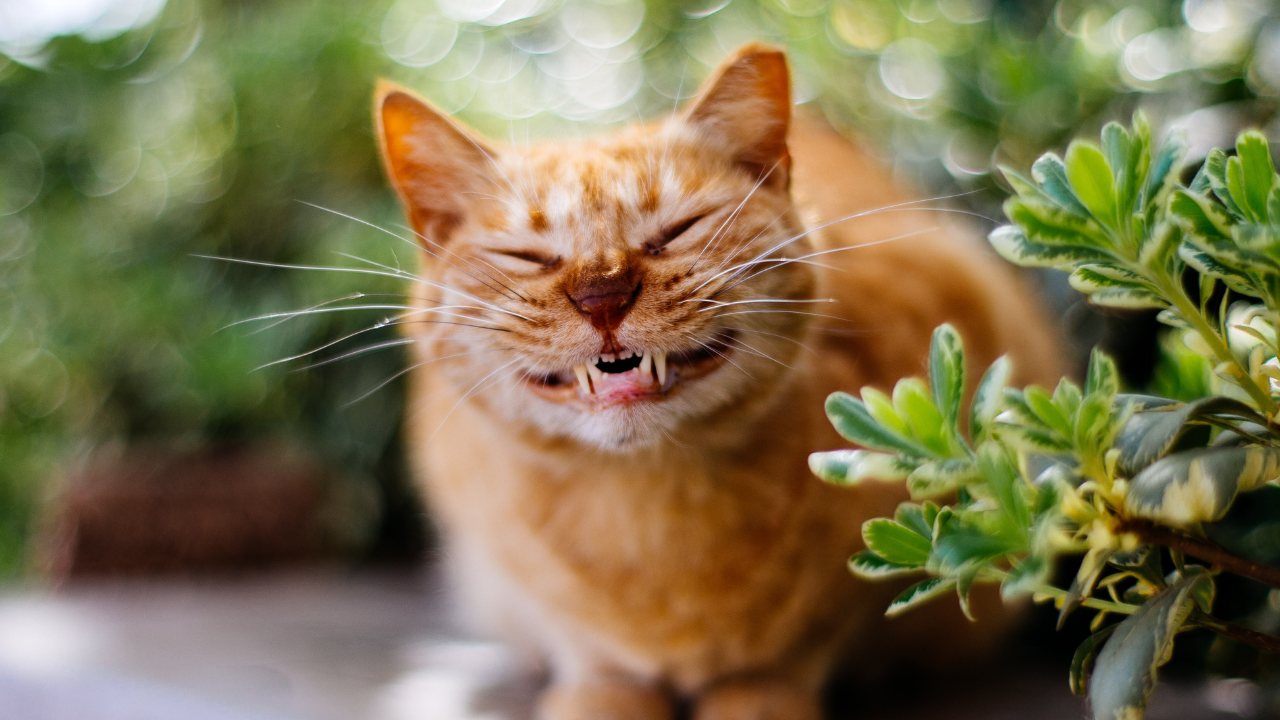The short answer is no, however, we can definitely increase the years before needing that first professional dental cleaning and increase the time in between dental cleanings.
In a survey of 1000 dog and cat owners, people were asked whether or not they thought their pet had any dental issues going on in their mouths. About 20% of respondents thought their pets had dental disease. When examined, 80% of dogs and 70% of cats actually had some form of disease from gingivitis and calculus accumulation to periodontal disease. Periodontal disease is the number one disease affecting our pets and is a source of chronic inflammation and discomfort.

For pet owners, the most common symptom to help them identify dental disease was halitosis, or bad breath. Halitosis is caused from bacteria breaking down food particles that get caught in pockets under the gumline of teeth. By the time halitosis is noticed, there is often significant periodontal disease present. There is a strong genetic component to oral immunity and the ability to fight oral bacteria; even with pets that are prone to dental issues there are steps we can take to prevent inflammation, periodontal disease, and ultimately tooth loss.
When asked how they deal with their pet’s dental disease, the vast majority of people say by using dental treats. Second place was by feeding oral care diets. Surveys show that pet owners are looking for products that say “whitens teeth, freshens breath.” Most people are also looking for words like “all natural” and “made in the USA.” The truth is, the FDA does not mandate what companies are allowed to say on their treat labels as long as they don’t claim that it fights a disease (unless they have the studies to prove that it does). For instance, they would not be able to claim that it fights periodontal disease or controls gingivitis without studies and data to back up their claim. Although, they would be able to say “helps with plaque and tartar” or “whitens teeth and freshens breath” - even if the product had no evidence to show that. It’s purely marketing so it's best not to choose products with unsubstantiated claims.

When veterinarians choose a product they want to know that there will be a decrease in plaque and tartar. Plaque is the sticky biofilm that accumulates on teeth within 12 hours of cleaning them. Tartar is formed when minerals in saliva, specifically calcium and phosphorous, cause the plaque to mineralize and become very hard and impossible to brush away. You need to remove the plaque quickly so that tartar does not accumulate. The gold standard for removing plaque is with daily tooth brushing. This truly is the best preventative measure you can take to keep your pet’s mouth as healthy as their genetics will allow. Unfortunately, unless socialized to it at a young age, a lot of pets don’t like it and a lot of people don’t like doing it to their pets.
Fortunately, for those people and pets there are alternatives. The Veterinary Oral Health Council is a good place to start. This group of veterinary dentists review product data submitted by manufacturers of dental treats and food. For the ones that can prove that their product decreases accumulation of plaque by at least 20%, they will be given a Seal of Acceptance. Some products decrease the plaque up to 70%. You can visit their website for the list of accepted products.

Most products work by offering some form of mechanical abrasion to remove plaque; this is true of most dental treats and dental food. Unfortunately, these can only work on the teeth that are used for chewing and care must be taken to choose products not only proven to work, but that are also safe. Very hard treats like antlers, bison ribs, yak bones, and some hard plastic toys can and do cause tooth fractures.
Dr. Jan Bellows, a prominent veterinary dental specialist, recommends Dentacetic dental wipes twice a day for pets up to 6 months old. These wipes work by both abrasive action on the tooth surface as well the whitening effect of acetic acid. Each tooth needs to be wiped so it is more time consuming than brushing, but some dogs tolerate it better. After 6 months, he recommends the wipes once a day and a once daily dental treat with the VOCH seal of acceptance. The wipes are something to consider if brushing is just not a reality for you and your pet. Please keep in mind that almost all pets, even those with regular dental care at home, will need professional cleaning eventually. How frequently they'll need professional cleaning will depend on their acceptance and response to your care at home. Although, if there is already significant inflammation, present at home care can be painful and counterproductive. A professional cleaning and subsequent healing may be recommended prior to instituting a program at home.

The Drake Center for Veterinary Care is an AAHA-accredited animal hospital located in Encinitas, CA. The Drake Center loves being a source of information for all pet owners across the country however if you have any questions regarding pet care and do not live in Encinitas, CA or surrounding cities, we encourage you to contact your local veterinarian.

